|
[1]
|
Sedjo RA, Sohngen B (2013) Wood as a Major Feedstock for Biofuel Production in the United States: Impacts on Forests and International Trade. J Sustain For 32: 195-211. doi: 10.1080/10549811.2011.652049

|
|
[2]
|
Goh CS, Junginger M, Cocchi M, et al. (2013) Wood pellet market and trade: a global perspective. Biofuels Bioprod Bioref 7: 24-42. doi: 10.1002/bbb.1366

|
|
[3]
|
Immerzeel DJ, Verweij PA, van der Hilst F, et al. (2014) Biodiversity impacts of bioenergy crop production: A state-of-the-art review. GCB Bioenergy 6: 183-209. doi: 10.1111/gcbb.12067

|
|
[4]
|
McDonald RI, Fargione J, Kiesecker J, et al. (2009) Energy sprawl or energy efficiency: Climate policy impacts on natural habitat for the United States of America. PLoS One 4: e6802. doi: 10.1371/journal.pone.0006802

|
|
[5]
|
Stoms DM, Davis FW, Jenner MW, et al. (2012) Modeling wildlife and other trade-offs with biofuel crop production. GCB Bioenergy 4: 330-341. doi: 10.1111/j.1757-1707.2011.01130.x

|
|
[6]
|
Dale VH, Kline KL, Wiens J, et al. (2010) Biofuels: Implications for Land Use and Biodiversity. The Ecological Society of America Biofuels and Sustainability Reports. Available from: http://www.esa.org/biofuelsreports/files/ESA%20Biofuels%20Report_VH%20Dale%20et%20al.pdf.
|
|
[7]
|
Wiens J, Fargione J, Hill J (2011) Biofuels and biodiversity. Ecol Appl 21: 1085-1095. doi: 10.1890/09-0673.1

|
|
[8]
|
Daystar J (2014) Environmental Impacts of Cellulosic Biofuels Made in the South East: Implications of Impact Assessment Methods and Study Assumptions. North Carolina State University: 264 pages.
|
|
[9]
|
Wear D, Abt R, Alavalapati J, et al. (2010) The South's Outlook for Sustainable Forest Bioenergy and Biofuels Production. The Pinchot Institute Report. Available from: http://www.pinchot.org/uploads/download?fileId=512.
|
|
[10]
|
Fletcher RJ, Robertson BA, Evans J, et al. (2011) Biodiversity conservation in the era of biofuels: risks and opportunities. Front Ecol Environ 9: 161-168. doi: 10.1890/090091

|
|
[11]
|
Riffell S, Verschuyl J, Miller D, et al. (2011) Biofuel harvests, coarse woody debris, and biodiversity – A meta-analysis. For Ecol Manage 261: 878-887. doi: 10.1016/j.foreco.2010.12.021

|
|
[12]
|
Dale VH, Lowrance R, Mulholland P, et al. (2010) Bioenergy Sustainability at the Regional Scale. Ecol Soc 15: 23.
|
|
[13]
|
Wear DN, Huggett R, Li R, et al. (2013) Forecasts of Forest Conditions in U.S. Regions under Future Scenarios: A Technical Document Supporting the Forest Service 2010 RPA Assessment. Gen Tech Rep SRS-170.
|
|
[14]
|
Lubowski RN, Plantinga AJ, Stavins RN (2008) What Drives Land-Use Change in the United States? A National Analysis of Landowner Decisions. Land Econ 84: 529-550.
|
|
[15]
|
Daniel CJ, Frid L (2012) Predicting Landscape Vegetation Dynamics Using State-and-Transition Simulation Models. Proc First Landsc State-and-Transition Simul Model Conf June 14-16 2011: 5-22.
|
|
[16]
|
Bestelmeyer BT, Herrick JE, Brown JR, et al. (2004) Land management in the American southwest: a state-and-transition approach to ecosystem complexity. Environ Manage 34: 38-51.
|
|
[17]
|
Costanza JK, Hulcr J, Koch FH, et al. (2012) Simulating the effects of the southern pine beetle on regional dynamics 60 years into the future. Ecol Modell 244: 93-103. doi: 10.1016/j.ecolmodel.2012.06.037

|
|
[18]
|
Wilson T, Costanza J, Smith J, et al. (2014) Second State-and-Transition Simulation Modeling Conference. Bull Ecol Soc Am 96: 174-175.
|
|
[19]
|
Halofsky J, Halofsky J, Burscu T, et al. (2014) Dry forest resilience varies under simulated climate-management scenarios in a central Oregon, USA landscape. Ecol Appl 24: 1908-1925. doi: 10.1890/13-1653.1

|
|
[20]
|
Provencher L, Forbis TA, Frid L, et al. (2007) Comparing alternative management strategies of fire, grazing, and weed control using spatial modeling. Ecol Modell 209: 249-263. doi: 10.1016/j.ecolmodel.2007.06.030

|
|
[21]
|
Abt R, Cubbage F, Abt K (2009) Projecting southern timber supply for multiple products by subregion. For Prod J 59: 7-16.
|
|
[22]
|
Abt KL, Abt RC, Galik CS, et al. (2014) Effect of Policies on Pellet Production and Forests in the U.S. South: A Technical Document Supporting the Forest Service Update of the 2010 RPA Assessment. Gen Tech Rep GTR-SRS-202.
|
|
[23]
|
U.S. Geological Survey National Gap Analysis Program (2013) Protected Areas Database-US (PAD-US), Version 1.3. Available from: http://gapanalysis.usgs.gov/padus/.
|
|
[24]
|
Terando A, Costanza JK, Belyea C, et al. (2014) The southern megalopolis: using the past to predict the future of urban sprawl in the Southeast U.S. PLoS One 9: e102261. doi: 10.1371/journal.pone.0102261

|
|
[25]
|
Noss RF, Platt WJ, Sorrie BA, et al. (2015) How global biodiversity hotspots may go unrecognized: lessons from the North American Coastal Plain. Richardson D, ed. Divers Distrib 21: 236-244. doi: 10.1111/ddi.12278

|
|
[26]
|
Southeast Gap Analysis Project (SEGAP) (2008) Southeast GAP regional land cover [digital data]. Available from: http://www.basic.ncsu.edu/segap/.
|
|
[27]
|
Burke S, Hall BR, Shahbazi G, et al. (2007) North Carolina's Strategic Plan for Biofuels Leadership. Available from: http://www.ces.ncsu.edu/fletcher/mcilab/publications/NC_Strategic_Plan_for_Biofuels_Leadership.pdf.
|
|
[28]
|
Forisk Consulting LLC (2014) Wood bioenergy US database 2013. Available by subscription.
|
|
[29]
|
Lal P, Alavalapati JRR, Marinescu M, et al. (2011) Developing Sustainability Indicators for Woody Biomass Harvesting in the United States. J Sustain For 30: 736-755. doi: 10.1080/10549811.2011.571581

|
|
[30]
|
Evans A, Perschel R, Kittler B, et al. (2010) Revised assessment of biomass harvesting and retention guidelines. For Guild, St Fe, NM, USA: 33.
|
|
[31]
|
Janowiak MK, Webster CR (2010) Promoting Ecological Sustainability in Woody Biomass Harvesting. J For 108: 16-23.
|
|
[32]
|
Apex Resource Management Solutions (2014) ST-Sim state-and-transition simulation model software. Available from: http//www.apexrms.com/stsm.
|
|
[33]
|
Rollins MG (2009) LANDFIRE: a nationally consistent vegetation, wildland fire, and fuel assessment. Int J Wildl Fire 18: 235-249. doi: 10.1071/WF08088

|
|
[34]
|
Comer P, Faber-Langendoen D, Evans R, et al. (2003) Ecological Systems of the United States: A Working Classification of U.S. Terrestrial Systems. Arlington, VA, USA. NatureServe, 82 pages.
|
|
[35]
|
Costanza JK, Terando AJ, McKerrow AJ, et al. (2015) Modeling climate change, urbanization, and fire effects on Pinus palustris ecosystems of the southeastern U.S. J Environ Manage 151: 186-199. doi: 10.1016/j.jenvman.2014.12.032

|
|
[36]
|
LANDFIRE (2014) LANDFIRE 2008 (version 1.1.0) Succession Class (S-Class) Layer. U.S. Department of Interior, Geological Survey. Available from: Http://landfire.cr.usgs.gov/viewer.
|
|
[37]
|
Multi-Resolution Land Characteristics Consortium (MRLC) (2011) National Land Cover Database, USFS Tree Canopy Cartographic, 2014. Available from: http://www.mrlc.gov/nlcd11_data.php.
|
|
[38]
|
Mackie R, Mason J, Curcio G (2007) LANDFIRE biophysical setting model for Southern Piedmont Dry Oak(-Pine) Forest. Available from: http://www.landfire.gov/national_veg_models_op2.php.
|
|
[39]
|
USDA Forest Service (2012) Forest Inventory and Analysis Data. Available from: http://apps.fs.fed.us/fiadb-downloads/datamart.html.
|
|
[40]
|
Young T, Wang Y, Guess F, et al. (2015) Understanding the Characteristics of Non-industrial Private Forest Landowners Who Harvest Trees. Small-scale For 1-13.
|
|
[41]
|
Hardie I, Parks P, Gottleib P, et al. (2000) Responsiveness of Rural and Urban Land Uses to Land Rent Determinants in the U.S. South. Land Econ 76: 659. doi: 10.2307/3146958

|
|
[42]
|
USDA Natural Resources Conservation Service (2000) 1997 National Resources Inventory Data, Revised December 2000.
|
|
[43]
|
Dale VH, Kline KL, Wright LL, et al. (2011) Interactions among bioenergy feedstock choices, landscape dynamics, and land use. Ecol Appl 21: 1039-1054. doi: 10.1890/09-0501.1

|
|
[44]
|
Evans JM, Fletcher RJ, Alavalapati JRR, et al. (2013) Forestry Bioenergy in the Southeast United States: Implications for Wildlife Habitat and Biodiversity. Availbale from: http://www.nwf.org/News-and-Magazines/Media-Center/Reports/Archive/2013/12-05-13-Forestry-Bioenergy-in-the-Southeast.aspx.
|
|
[45]
|
Owens AK, Moseley KR, McCay TS, et al. (2008) Amphibian and reptile community response to coarse woody debris manipulations in upland loblolly pine (Pinus taeda) forests. For Ecol Manage 256: 2078-2083. doi: 10.1016/j.foreco.2008.07.030

|
|
[46]
|
Otto CR V, Kroll AJ, McKenny HC (2013) Amphibian response to downed wood retention in managed forests: A prospectus for future biomass harvest in North America. For Ecol Manage 304: 275-285. doi: 10.1016/j.foreco.2013.04.023

|
|
[47]
|
Davis JC, Castleberry SB, Kilgo JC (2010) Influence of coarse woody debris on herpetofaunal communities in upland pine stands of the southeastern Coastal Plain. For Ecol Manage 259: 1111-1117. doi: 10.1016/j.foreco.2009.12.024

|
|
[48]
|
Wood P, Sheehan J, Keyser P, et al. (2013) Cerulean Warbler: Management Guidelines for Enhancing Breeding Habitat in Appalachian Hardwood Forests. American Bird Conservancy. The Plains, VA, USA. 28 Pages.
|
|
[49]
|
Perry RW, Thill RE (2013) Long-term responses of disturbance-associated birds after different timber harvests. For Ecol Manage 307: 274-283. doi: 10.1016/j.foreco.2013.07.026

|
|
[50]
|
Wilson MD, Watts BD (2000) Breeding bird communities in pine plantations on the coastal plain of North Carolina. Chat 64: 1-14.
|
|
[51]
|
Peet RK, Allard DJ (1993) Longleaf Pine Vegetation of the Southern Atlantic an Eastern Gulf Coast Regions: A Preliminary Classification. In: Hermann SM, ed. Proceedings of the Tall Timbers Fire Ecology Conference, No. 18, The Longleaf Pine Ecosystem: Ecology, Restoration and Management. Tallahassee, FL, USA: Tall Timbers Research Station.; 1993: 45-81.
|











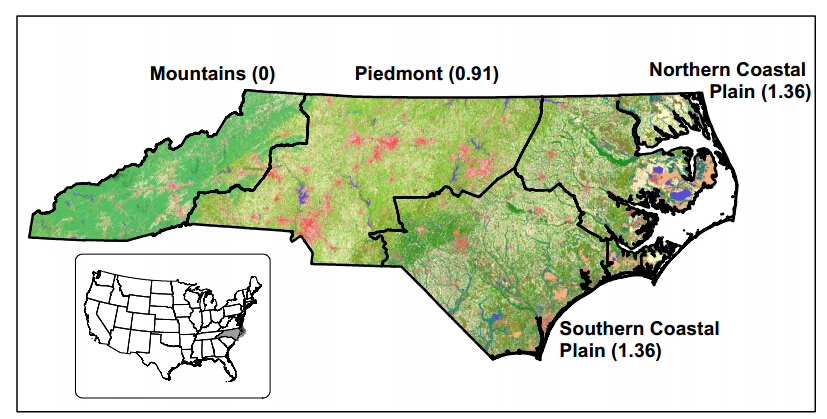

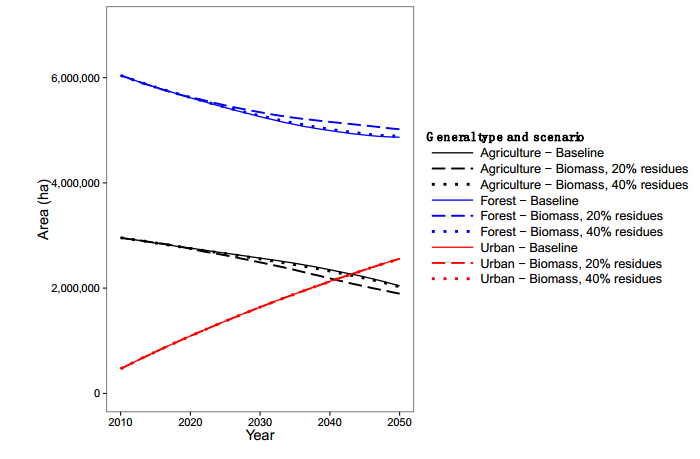
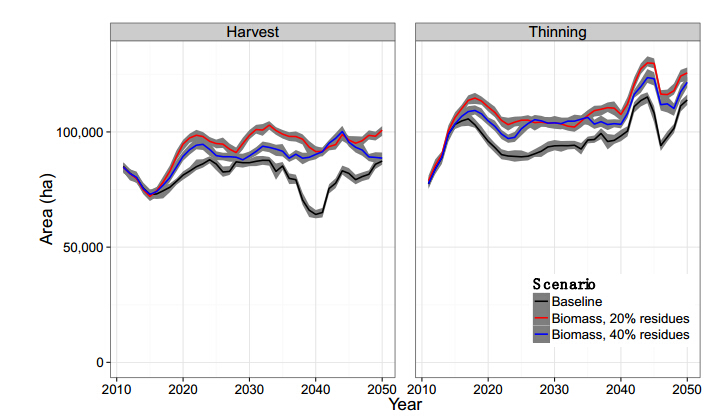
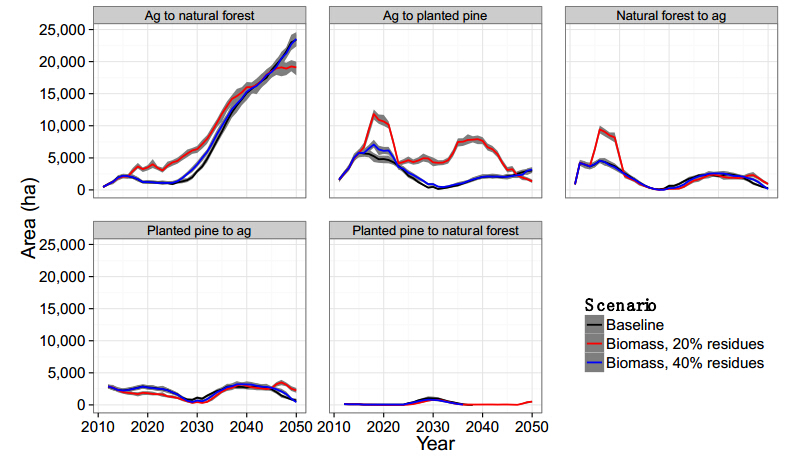
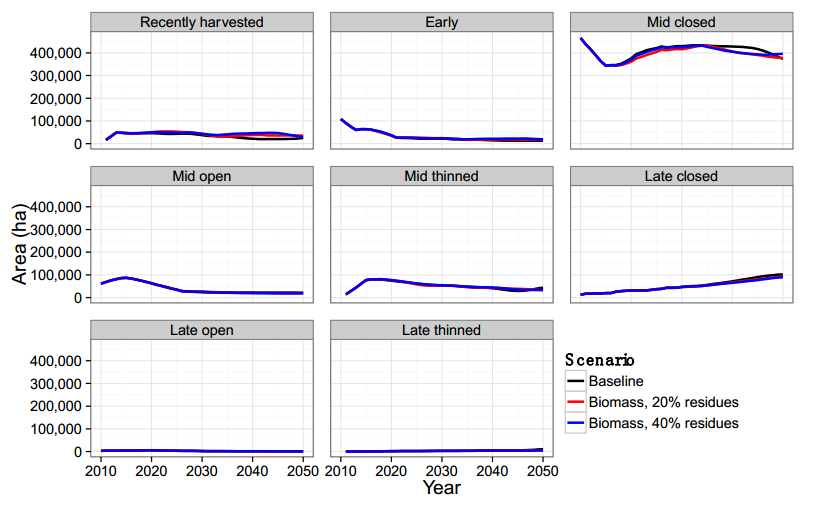
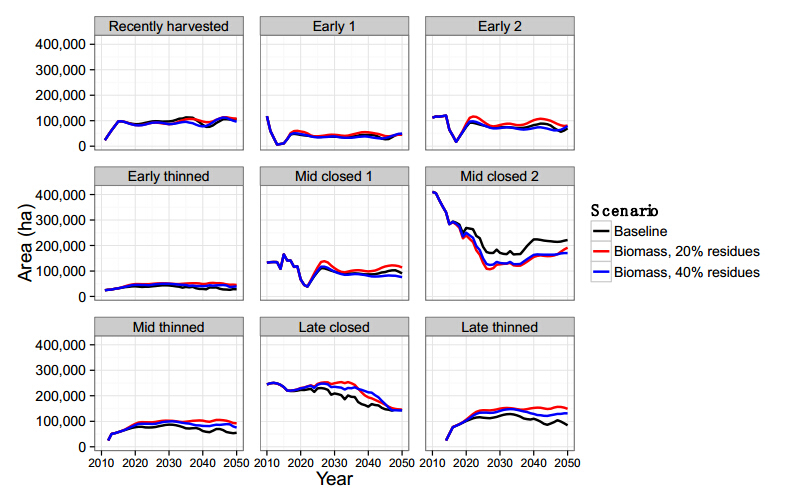


 DownLoad:
DownLoad: